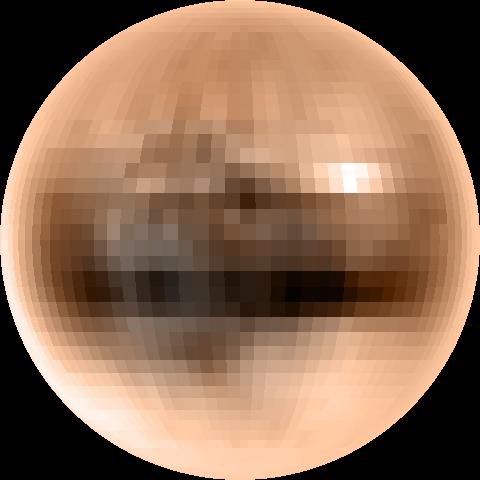A week ago, a committee including senior astronomers appointed by the Agiod proposed a definition that confirms Pluto's status as a planet, and promotes Pluto's moon Charon, the asteroid Ceres, and the recently discovered object, UB313 to the same status. This proposal failed in a mock vote two days later, but the decisive vote will take place this Thursday (today)

In an article that appeared on several news sites in the field of science, he writes: "The biggest astronomical debate of the new millennium will reach its climax on Thursday, when the representatives of the various countries will decide whether to approve or reject the proposal for the current definition of planets proposed by the IAU.
A week ago, a committee including senior astronomers appointed by the Hagiod proposed a definition that confirms Pluto's status as a planet, and promotes Pluto's moon Charon, the asteroid Ceres, and the recently discovered object, UB313, to the same status. This proposal was defeated in a mock vote two days later, but the decisive vote will take place this Thursday (today).
Although the original proposal seems simple and based on physical principles (a planet that has enough mass to be round, orbit a star and not be a star itself or a moon of another planet), this definition is controversial among the community of planetary scientists. The challenge posed by the proposal is that under the new definition there could soon be dozens of new planets in our solar system. An unwanted result for many astronomers.
At the same time, two new articles were approved for publication in the online journal arXiv.org. In the first article, Dr. Steven Suter, from the Department of Astrophysics at the American Museum of Natural History in New York, he detailed the concept of the gravitational dominance in the orbital region of the planetary body, while the Croatian scientist Dr. Bojan Pačnik from the Department of Physics at the University of Split, claimed that a criterion It is important for a planet to have the ability to have an atmosphere.
The most popular alternative to the union's proposal - the one led by researchers Tancardi and Fernandez - requires the planet to be the largest body by orders of magnitude among its local population, and massive enough to be round. A body that orbits due to its own gravity but is accompanied by objects of a similar size cannot be planets and will have to find another definition for them. This would kill the planetary ambitions of Pluto, and the other ex-Neptunian objects and of course all the asteroids.
A similar rationale for this alternative was proposed by Steven Suter in a paper submitted to the Astrophysical Journal. Suter claimed that "a planet is the final product of the growth of the disk around a main star or sub-star. To this definition we can also add that the body is dominant over the masses of the other bodies in the area of its circumference.
Pechanik agreed with this definition and said: "Gravitational dominance in the coffee region around a star or remnants of a star should give the body holding it the status of a planet, but a planet needs to have its own internal physical properties, which are not related to the dynamics of its environment."
Currently, the popular feature is the spherical shape caused by the body's gravity. The problem is that objects can become round through different processes than those established by the committee. For example, a violent kinetic event can cut a potato-like asteroid into a pile of fragments (this is what happened to Dactyl, a moon of the asteroid Ida, which is about one kilometer in diameter) or an iron meteorite that can undergo melting and solidify back into a ball.
Discrimination of bodies whose sphericity was caused by other reasons compared to those whose sphericity is due to the force of gravity may turn out to be problematic for objects on the border between normal planets and minor planets, especially for bodies located far in the Kuiper belt, and even more so - for planets outside the solar system," said Pechanik.
This is why Pachenik wants to propose another physical property - the ability of the body to maintain its atmosphere against the interplanetary vacuum. In previous works, Pechanik developed the concept necessary to quantify his criterion. This was a critical step because previous attempts to link an atmosphere to a necessary condition for planets failed - the criterion was not quantifiable, and it is impossible to distinguish a thin atmosphere from a vacuum.
According to Pachenik's work published in the Journal of Planetary and Space Science, for a special issue that dealt with planets outside the solar system: "Only the ability to maintain the atmosphere is important, not the atmosphere itself, therefore Mercury, even though its atmosphere is borderline, will maintain its status the planetary
One thing is certain after today's vote - the solar system will not look the same.
